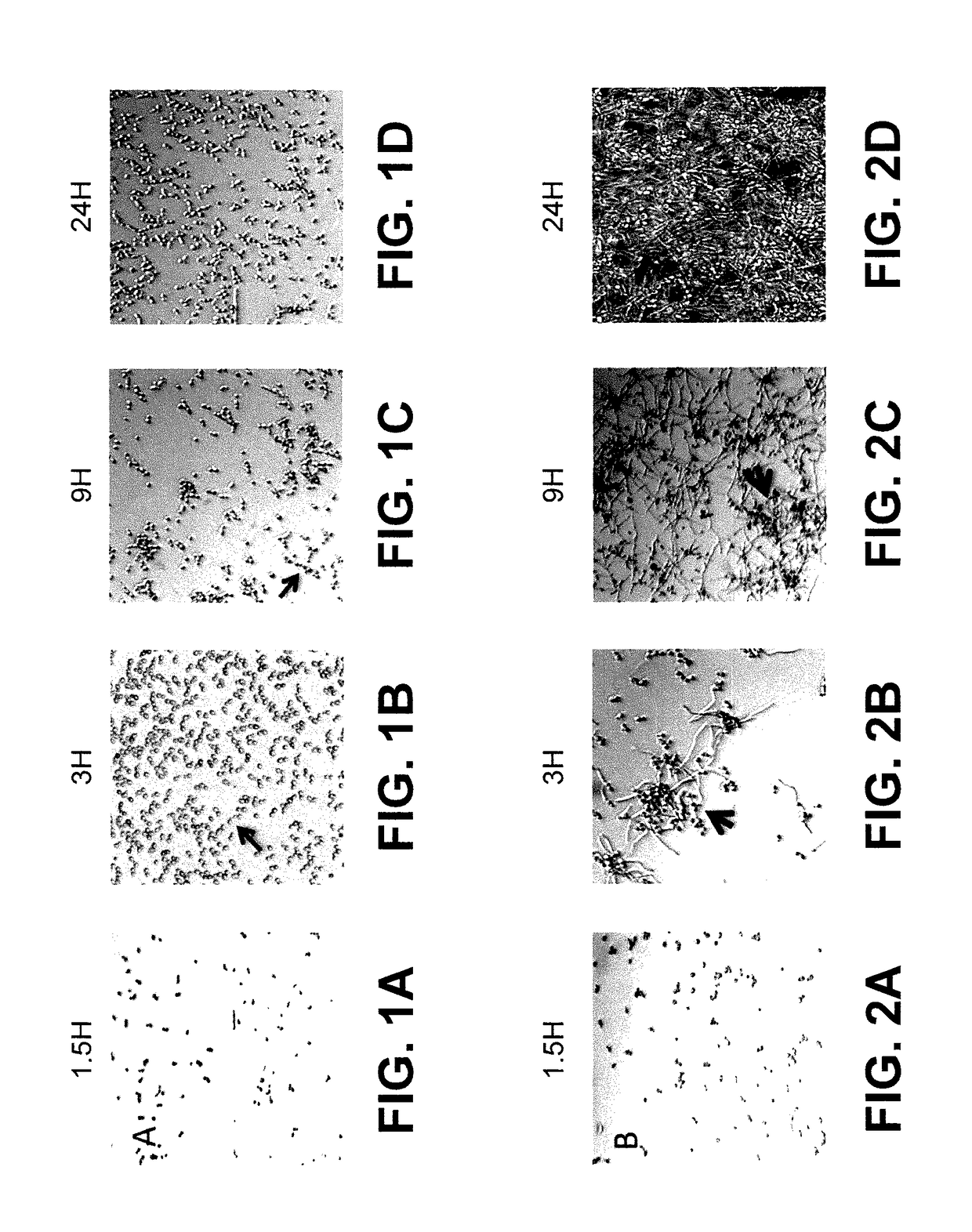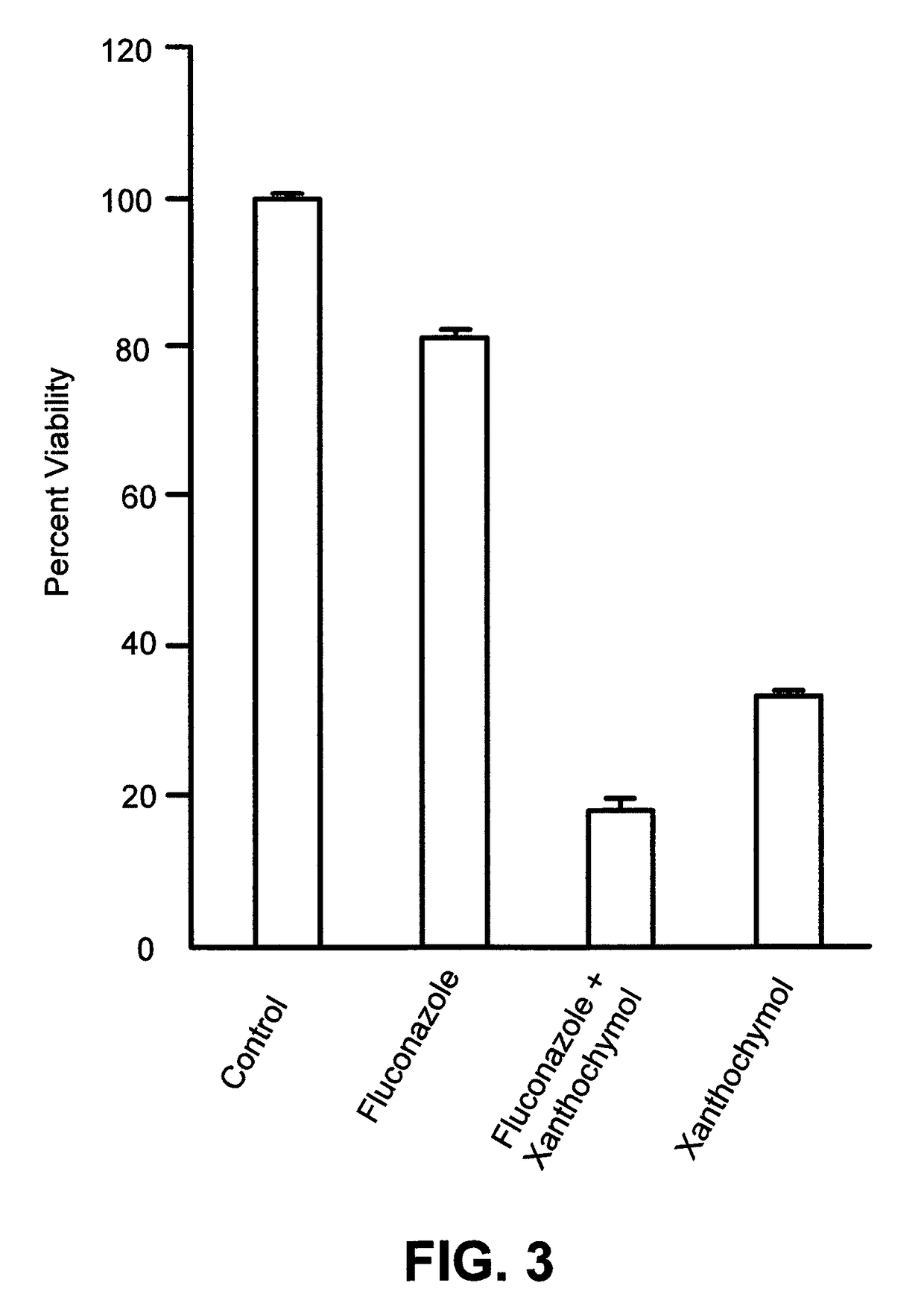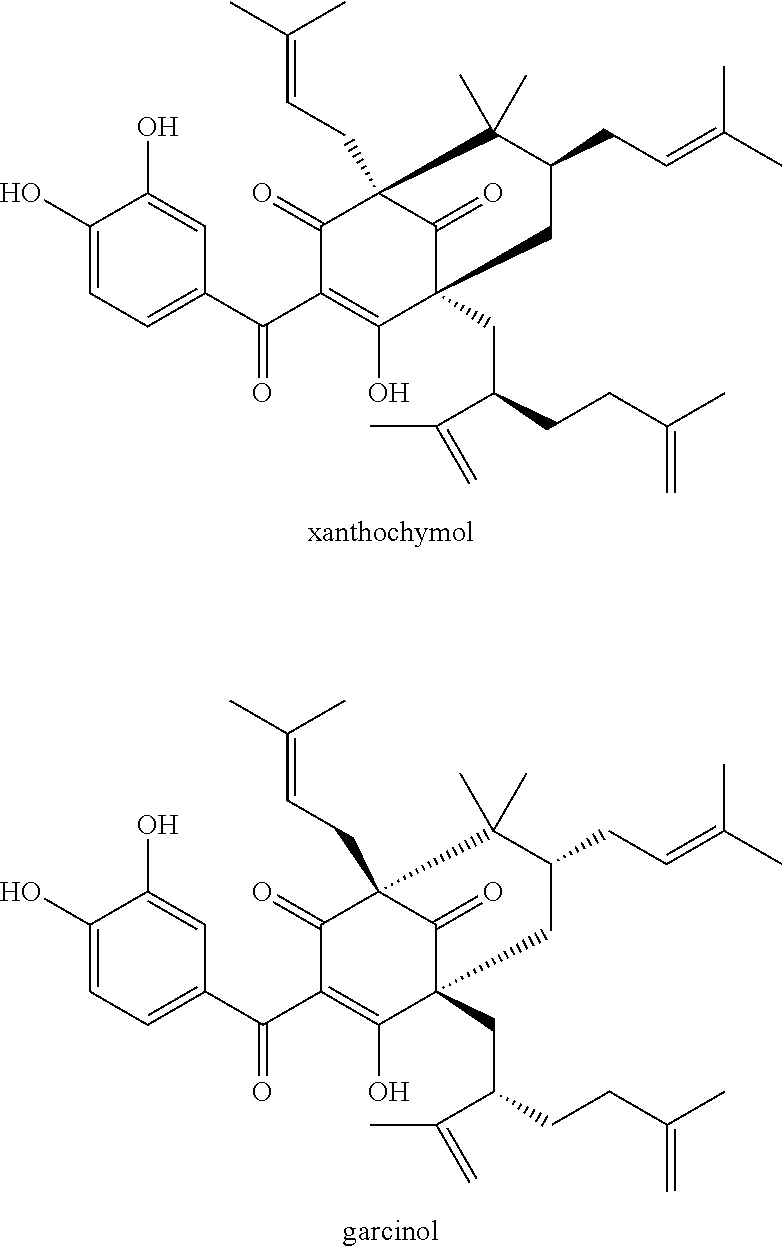Method of inhibiting biofilm formation
a biofilm and hyphae technology, applied in the field of reducing fungal infections, can solve the problems of failure of biofilm maturation and hyphae death in mature biofilms, and achieve the effects of reducing fluconazole ec50, preventing fungal germ tube emergence, and inhibiting hyphae and subsequent biofilm maturation
- Summary
- Abstract
- Description
- Claims
- Application Information
AI Technical Summary
Benefits of technology
Problems solved by technology
Method used
Image
Examples
Embodiment Construction
[0011]Xanthochymol and garcinol, stereoisomeric multi-isoprenylated benzophenones from the fruit of Garcinia xanthochymus, have been identified as potential antibiofilm agents. Xanthochymol and garcinol are catechols, compounds containing a 1,2-benzenediol moiety. These compounds can be extracted from the fruit in high concentrations (up to 70 mg per g dry mass). Both xanthochymol and garcinol were cytotoxic to C. albicans biofilms and specifically targeted the hyphal form of the fungus.
[0012]
[0013]Xanthochymol and garcinol showed multiple activities against C. albicans biofilms. In temporal order, these activities included inhibition of hyphal emergence, inhibition of microcolony formation, proapoptotic activity early in biofilm formation, hyphal cytotoxicity in mature biofilms, and complementarity to the activity of fluconazole.
[0014]In vitro growth of C. albicans hyphae proceeds in two phases: in the first several hours, germ tubes are produced; then they are extended to form tru...
PUM
| Property | Measurement | Unit |
|---|---|---|
| concentration | aaaaa | aaaaa |
| concentration | aaaaa | aaaaa |
| concentration | aaaaa | aaaaa |
Abstract
Description
Claims
Application Information
 Login to View More
Login to View More - R&D
- Intellectual Property
- Life Sciences
- Materials
- Tech Scout
- Unparalleled Data Quality
- Higher Quality Content
- 60% Fewer Hallucinations
Browse by: Latest US Patents, China's latest patents, Technical Efficacy Thesaurus, Application Domain, Technology Topic, Popular Technical Reports.
© 2025 PatSnap. All rights reserved.Legal|Privacy policy|Modern Slavery Act Transparency Statement|Sitemap|About US| Contact US: help@patsnap.com



